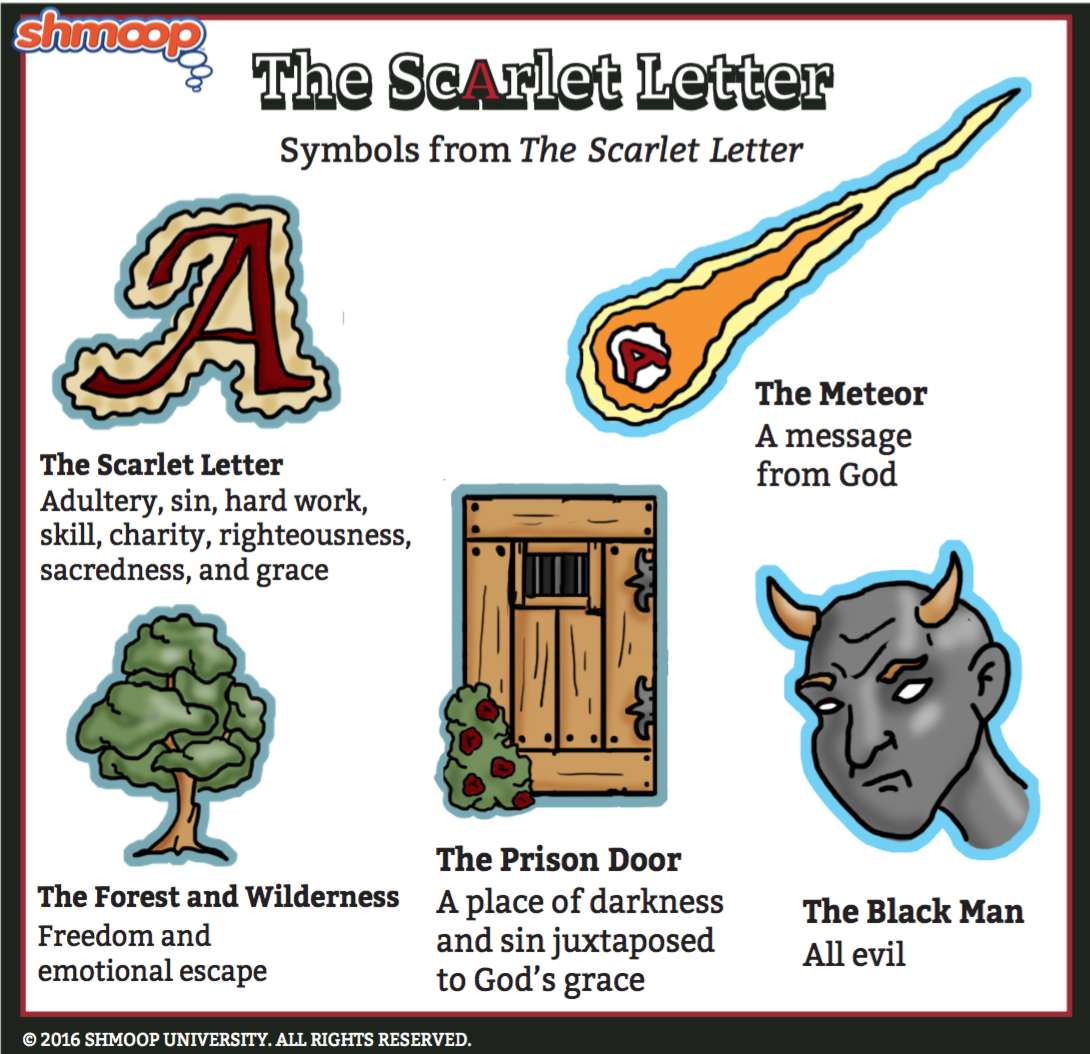Symbolism, Imagery, Allegory

(Click the symbolism infographic to download.)
Life in the 21st century sure is boring. We may have iThings and FaceFinds, but we don't have meteors-in-the-shape-of-an-A and exploding stars and blazing spears in the midnight sky—or, if we do, we don't bother interpreting them as Indian warfare or pestilence (12). For the Puritans, any "natural phenomena that occurred with less regularity than the rise and set of sun and moon" end up getting interpreted as supernatural warnings, as messages from God about approaching doom.
When Dimmesdale and Hester have a secret and accidental meeting in the town square, they climb the scaffold together and each hold one of Pearl's hands. This is the first moment we see them as a family, and apparently God sees it too, because just at that moment a meteor streaks across the sky. It's so bright that it reveals the whole square, "with a singularity of aspect that seemed to give another moral interpretation to the things of this world that they had ever borne before" (12.30).
In other words, God sees them. At least, that's what Dimmesdale thinks: thanks to the "disease in his own eye and heart," the minister sees the meteor in the shape of an A in "dull red light" (12.33). To him, it's a symbol of his own sin, as though God were trying to expose his secret to the entire world. He thinks solely about what the meteor means to him and him alone.
But the community interprets it differently, as a message from God commemorating the life of the recently deceased Governor and proclaiming him to be an angel. What's crazy is that they see an A, too, but they interpret it as "A" for "angel." Which is it? Is it just a bizarre natural phenomenon—or does Hawthorne actually think that it had some supernatural meaning?
